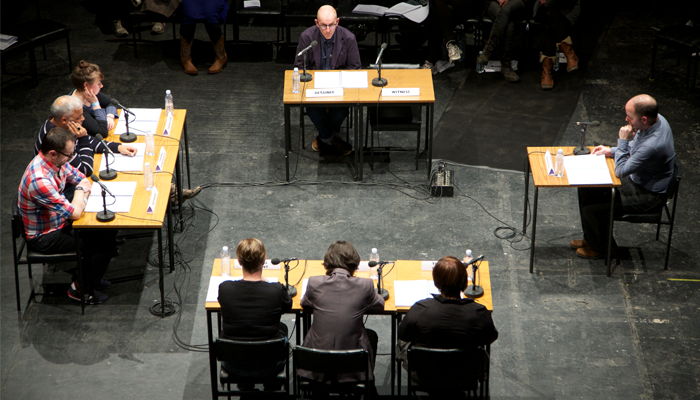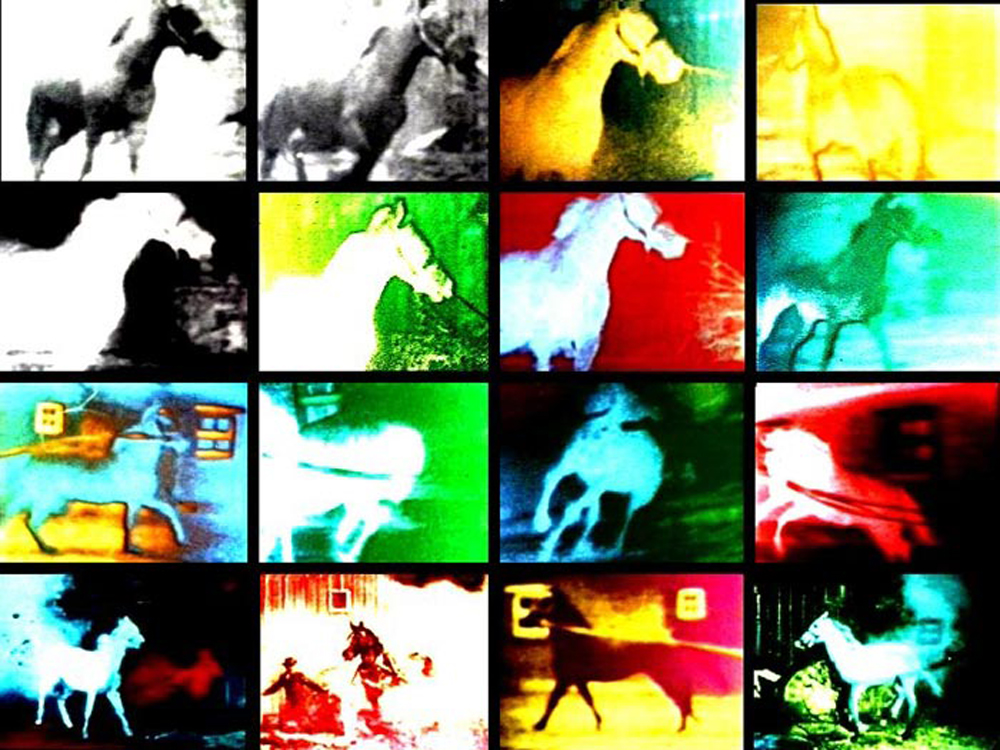Film Programme 6: Perception
Film Programme 6: Perception
Psychedelic and intense, and featuring some of the most visually stunning, mesmerizing and transcendent experiences you can imagine, batten down the hatches for some of the boldest, most immersive and abrasive works in experimental cinema.
Planck’s Constant, Dir. Pekka Sassi, Finland, 2003, 3 mins, Beta SP
Music: Pekka Sassi
A study on light that cannot be seen. Video camera shoots the monitor that shows the image from the camera in real time. The aperture is adjusted until the light reaches a point where it seems to be present as a being. The moving image, in other words the light, materializes through the blinking, and produces creatures. (Av-Arrki)
Soundsize, Dir. Steina Vasulka, Woody Vasulka, USA, 1974, 4 mins, Beta SP
Soundsize continues the Vasulkas’ investigation into the relationship of sound and image. Here a pattern of dots is modulated by sounds generated from a synthesizer, changing size and shape in a visual manifestation of electronic sound. (Lux)
The Vasulkas’ technological investigations into analogue and digital processes and their development of electronic imaging tools, which began in the early 1970s, place them among the primary architects of an expressive electronic vocabulary of image-making. Applying an informal, real-time spontaneity to their formalist, often didactic technical research, they chart the evolving formulation of a grammar and syntax of electronic imaging as they articulate a processual dialogue between artist and technology. (Electronic Arts Intermix)
#11, Marey<->Moiré, Dir. Joost Rekveld, The Netherlands, 1999, 21 mins, 35mm
Music: Edwin van der Heide
#11 (Marey <-> Moiré) is a film in which all images were generated by intermittently recording the movement of a line. It is a film about the discontinuity that lies at the heart of the film medium. In order to make the film I constructed a machine with the help of which I was able control three movements:
– the movement of the film in the camera
– the rotation of a shutter in front of the lightsource
– the movement of a line in front of the camera
The interferences possible between these three motions are the material I used to compose #11. For every section of the film I recorded a set of high contrast black and white originals which I used in the optical printer to create interference images in colour. (Joost Rekveld)
Symmetricks, Dir. Stan Vanderbeek, USA, 1972, 6 mins 30 secs, 16mm
Computer-animated drawing that works at the speed of light. Developed as an experiment at MIT while at the Centre for Advanced Visual Studies, this film explores the rapid tracking of drawn line images compounded by the symmetry of multiple images; one result of the experiment is the phenomenon of colour that comes from the black and white images, a blend of music and images that mystifies and delights the eye. (Filmmakers Coop)
7362, Dir. Pat O’Neill, USA, 1967, 10 mins, 16mm
Music: Joseph Byrd, Michael Moore
A bilaterally symmetrical (west to east) fusion of human, biomorphic and mechanical shapes in motion. Has to do with the spontaneous generation of electrical energy. A fairly rare (ten years ago) demonstration of the Sabattier effect in motion. Numbered after the film stock of the same name. (Canyon Cinema)
Pat O’Neill is a sculptor with a formal background in the fine arts. Like Michael Snow, also a sculptor, O’Neill found unique possibilities in the cinema for exploration of certain perceptual installations. 7362… was the first of many experiments with the medium as a ‘sculptural’ device. The term is intended only as a means of emphasizing the film’s kinetic qualities. (Gene Youngblood)
Berlin Horse, Dir. Malcolm le Grice, UK, 1970, 8 mins, 16mm
This film is largely filmed with an exploration of the film medium in certain aspects. It is also concerned with making certain conceptions about time in a more illusory way than I have been inclined to explore in many other of my films. It attempts to deal with some of the paradoxes of the relationships of the “real” time which exists when the film was being shot, with the “real” time which exists when the film is being screened, and how this can be modulated by technical manipulation of the images and sequences. The first part is made from a small section of film shot by me in 8mm colour, and later refilmed in various ways from the screen in 16mm b/w. The b/w material was then printed in a negative positive superimposition through colour filters creating a continually changing ‘solarization’ image, which works in its own time abstractly from the image. The second part is made by treating very early b/w newsreel of a similar subject in the same way. (Malcolm le Grice)
Tanka, Dir. David Lebrun, USA, 1976, 9 mins, 16mm
Music: Ashish Khan, Buddy Arnold, Pranesh Khan, Francisco Lupica
Tanka means, literally, a thing rolled up. The film, photographed from Tibetan scroll paintings of the sixteenth to nineteenth centuries, is a cyclical vision of ancient gods and demons, an animated journey through the image world of the Tibetan Book of the Dead. (Canyon Cinema)
Lapis, Dir. James Whitney, USA, 1963-66, 10 mins, 16mm
Lapis has an alchemical reference as it alludes to lapis lazuli, the philosopher’s stone, produced through the intense metaphysical processes of sublimation and distilling, of fire and ether. The film Lapis, however, seems more transcendental and meditative than intensely mystical, as it can be best described as an exquisite, magical, revolving and ever-changing mandala. The centre of the circular mandala remains fixed at the centre of the frame throughout the film, only diverging from this position towards the end of the film where it pulls apart into two
pieces, almost like a splitting cell then converges back into the centre. (Pamela Taylor Turner)
Ray Gun Virus, Dir. Paul Sharits, USA, 1966, 14 mins, 16mm
Although affirming projector, projection beam, screen, emulsion, filmframe, structure, etc., this is not an ‘abstract’ film. /projector as pistol/time coloured pills/yes-no/mental suicide and then rebirth as projection.’…I really think you have a very fine film there of magnificent subtlety in its byplay with the texture of film and the eye’s grain… (Stan Brakhage)
‘The retinal retention of after images is remarkable.’ (Ed Emshwiller)
Ray Gun Virus is a work in which no images appear yet one can get pure identity on film. … projected film itself makes the viewer aware of where he stands. Ray Gun Virus is not so-called ‘Psychedelic Cinema’ but even more and goes beyond it through Sharits’ bright clarification of the media. (Takahiko Iimura)
A film made entirely of colour fields that flicker at different rates and rhythms. The effect is hallucinogenic to say the least. The frame appears to be the unifying force that keeps the light of the projector from spilling put all over the room, and each 24th of a second comes thrashing into the viewer’s consciousness. (Tate Modern)
Below are some online links which you can use for reference. To see the films in their original glory, check with the distributors of the films for their terms and conditions.
Documentation
Artists

Malcolm Le Grice
Paul Sharits

